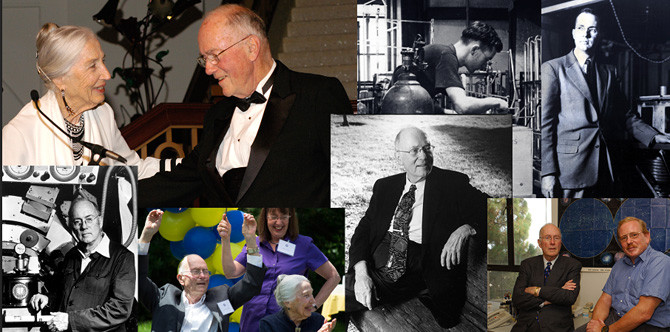Charles Townes, laser inventor and space science pioneer, dies at 99

Charles Townes, who shared the 1964 Nobel Prize in Physics for invention of the laser, and later pioneered its use in astronomy, has died, the University of California at Berkeley reported.
He was 99 and in failing health, and died on way to hospital.
Berkeley paid rich tributes to its professor emeritus known for his "intellectual curiosity, his persistence and his pioneering spirit, dedication to science and personal commitment to remaining active in research".
Until last year, Townes visited the campus daily, working either in his office in the physics department or at the Space Sciences Laboratory.
Townes, a native of South Carolina, was 35 when seated on a park bench in Washington DC in 1951, he was struck by a revolutionary solution to the problem of creating a pure beam of short-wavelength, high-frequency light.
The revelation
That revelation – which Townes believed was not much different from a religious revelation – led to the first laser, a device indispensable to medicine, communication, entertainment and research today.
Albert Einstein had proposed in 1917 that the right wavelength of light can stimulate an excited atom to emit light of the same wavelength by amplifying it.
As a professor at Columbia University and a consultant for Bell Telephone Laboratories, Townes was exploring ways to contain such an excited gas of atoms.
His solution allowed him to separate excited from non-excited molecules and store them in a resonant cavity, so that when a microwave travelled through the gas, the molecules were stimulated to emit microwaves in step with one another to build a mighty beam.
He and his students built such a device using ammonia gas in 1954 and dubbed it a maser, for microwave amplification by stimulated emission of radiation.
Four years later, in 1958, he and his brother-in-law and future Nobelist Arthur Schawlow conceived the idea of doing the same thing with optical light, but using mirrors at the ends of a gas tube to amplify the light.
Final frontier
Bell Labs patented the laser and another scientist Theodore Maiman went on to demonstrate the first laser – light amplification by stimulated emission of radiation – in 1960.
Townes went on to make big strides in space science. He and his colleagues used the laser in space applications and were first to discover complex molecules near the centre of the Milky Way galaxy.
Townes pioneered the field of infrared astronomy, with an infrared detector incorporating a precision CO2 laser, which made it easier to study this wavelength of light from stellar sources without contamination from hot sources all around us.
In fact, this provided the first evidence of a black hole at the centre of the Milky Way.
Townes subsequently built an interferometer, again using lasers, that combined infrared light collected by three separate telescopes into high-resolution images. This Infrared Spatial Interferometer Array, housed at the Mt Wilson observatory, can measure the diameters of distant stars.
On science and religion
He and his team were working on telescopes to look for possible infrared laser signals from newly discovered planets circling nearby stars, in search of extra-terrestrial civilizations.
Townes believed that while science and religion may seem different, they have many similarities, and should interact and enlighten each other.
"Science tries to understand what our universe is like and how it works, including us humans," he wrote.
"Religion is aimed at understanding the purpose and meaning of our universe, including our own lives. If the universe has a purpose or meaning, this must be reflected in its structure and functioning, and hence in science."
"Charlie was a cornerstone of the Space Sciences Laboratory for almost 50 years," said Stuart Bale, director of the lab and a UC Berkeley professor of physics.
"He trained a great number of excellent students in experimental astrophysics and pioneered a program to develop interferometry at short wavelengths. He was a truly inspiring man and a nice guy. We'll miss him."
© Copyright IBTimes 2025. All rights reserved.



















